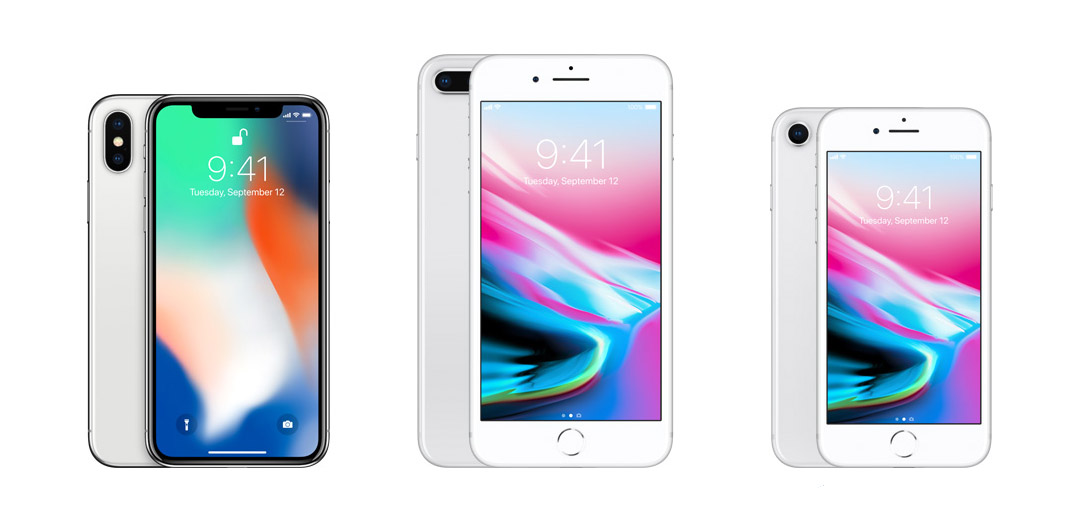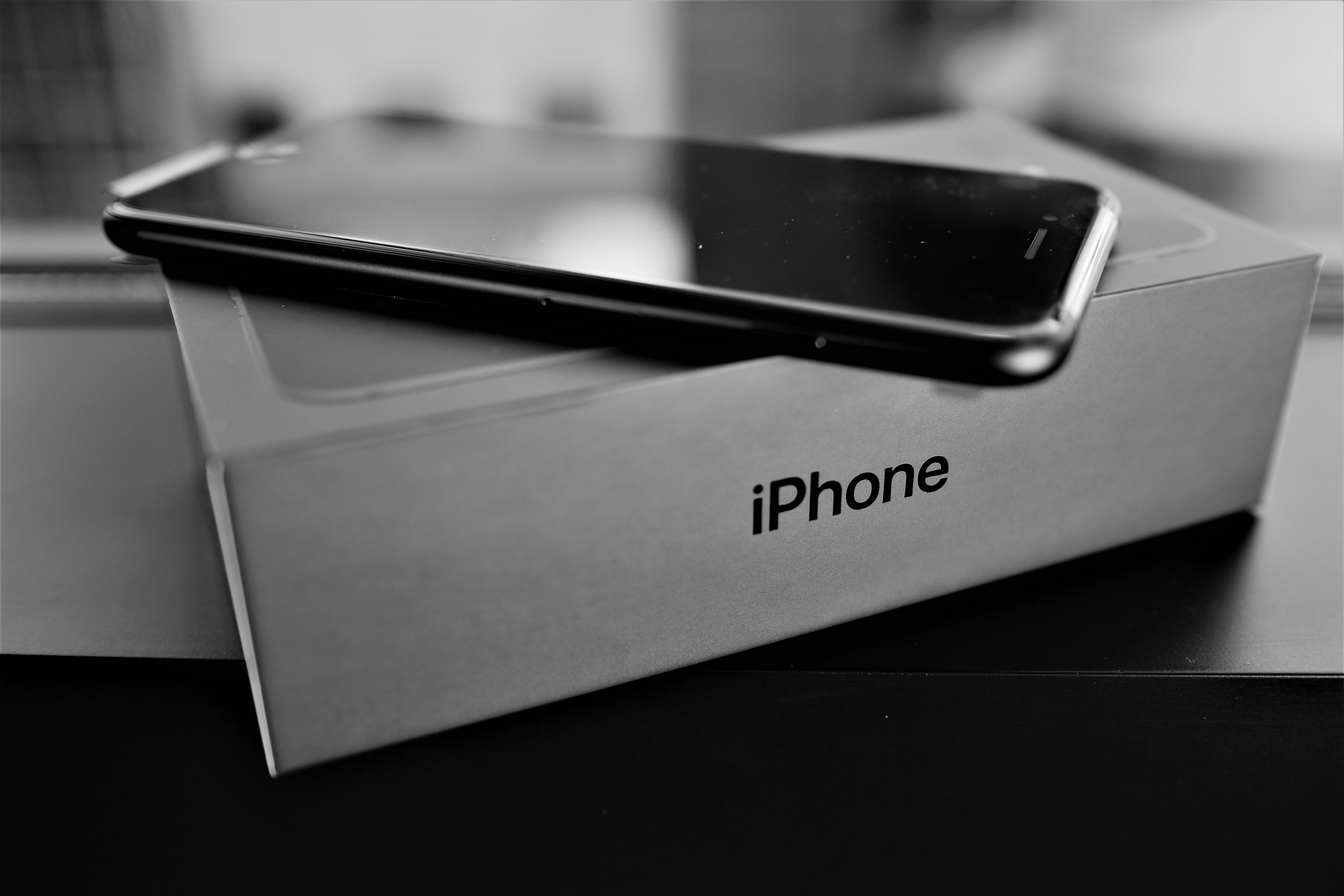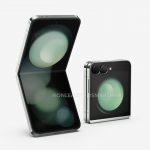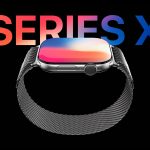iPhone 8 vs. iPhone 8 Plus vs. iPhone X: This is the Best One
iPhone 8 vs. iPhone 8 Plus vs. iPhone X: Which is the Best One for You?
Apple has already begun the sales for their brand new iPhone 8 and the 8 Plus but we are going to acknowledge the looming presence of the iPhone X over all iPhone 8 / 8 Plus reviews. What is the iPhone X? Who is the iPhone 8 meant for? What is the best choice for you? If you are in the market for a new upgrade in the iPhone genre let us give you more insight into what the differences are between the three flagship phones. Check out our 5 considerations below to see if it helps you in deciding which iPhone is best for you! Thank you.
To begin answering your question we will begin by comparing the Specs below:
iPhone 8 |
iPhone 8 Plus | iPhone X | |
| Display Size: | 4.7in Retina HD (1334×750, 326ppi) IPS | 5.5in Retina HD (1920×1080, 401ppi) IPS | 5.8in Super Retina Display (2436×1125, 458ppi) (Super AMOLED) |
| OS: | iOS 11 | iOS 11 | iOS 11 |
| Processor: | Apple A11 Bionic, M11 co-processor | Apple A11 Bionic, M11 co-processor | Apple A11 Bionic, M11 co-processor |
| Storage Size: | 64GB/256GB | 64GB/256GB | 64GB/256GB |
| Main Camera(s): | 12Mp, f/1.8, 5x digital zoom, Quad-LED flash | 12 MP wide-angle, f/1.8, OIS + 12 MP telephoto, f/2.8, optical zoom, 10x digital zoom, Portrait Lighting, Portrait Mode, Quad-LED flash | 12 MP wide-angle, f/1.8, OIS + 12 MP telephoto, f/2.4, OIS, optical zoom, 10x digital zoom, Portrait Lighting, Portrait Mode, Quad-LED flash |
| Selfie Camera: | 7Mp FaceTime HD, f/2.2, 1080p video | 7Mp FaceTime HD, f/2.2, 1080p video | 7Mp FaceTime HD, f/2.2, 1080p video |
| Video Recording: | 4K at 24/30/60fps, 1080p slo-mo at 240fps | 4K at 24/30/60fps, 1080p slo-mo at 240fps | 4K at 24/30/60fps, 1080p slo-mo at 240fps |
| Dimensions: | 67.3×138.4×7.3mm | 78.1×158.4×7.5mm | 70.9×143.6×7.7mm |
| Touch ID? | YES | YES | NO |
| Face ID? | NO | NO | YES |
| Wireless
Charging? |
YES | YES | YES |
| Water Proofing? | YES IP67 | YES IP67 | YES IP67 |
| Price USD | $699 | $799 | $999 |
| 3D Touch? | YES | YES | YES |
| Weight | 148g | 202g | 174g |
Consideration 1: Display / Design
- iPhone X (iPhone 10):
- 5.8 inch Super AMOLED (Super Retina Display) (~82.9% screen-to-body ratio) 2436 x 1125 resolution (~458 ppi) True Tone OLED Display w/ ION strengthened glass
- iPhone 8
- 4.7 inch True Tone IPS Retina Display (LCD) (~65.4% screen-to-body ratio) 1334 x 750 resolution (~326 ppi) ION strengthened glass
- iPhone 8 Plus
- 5.5 inch True Tone IPS Retina HD Display (LCD) (~67.4% screen-to-body ratio) 1920 x 1080 resolution (~401 ppi) ION strengthened glass
Let’s begin with the obvious, the display and design. The iPhone X is undoubtedly different. A complete transformation of the iPhone that we used to know. Apple finally got on board with the OLED display with the iPhone X which makes it the first Apple flagship to sport a vibrant display with deep blacks and beautiful colors that OLED panels are known for. Here the iPhone 8 and 8 Plus differs by carrying the regular Apple IPS LCD panels. Now don’t get us wrong, the IPS panels are calibrated meticulously by Apple to still produce “true tone” colors and the iPhone have always been regarded as having some of the best displays for a very long time. Here we must consider if an AMOLED display is important to you.
The next is the shape / design of the iPhone’s. The iPhone X is also extremely different here with it’s brand new Super Retina Display (aka. OLED) that stretches edge to edge but also from the top to the bottom. The unusually bit about the iPhone 10 (X) is that there is a added “lip” at the top which contains the new and fancy optical gadgets needed for it’s advanced Face ID feature (alongside the selfie camera). Many people have agreed that the iPhone 10 (X) looks like it has a pair of “ears” while other’s calls it a “lip” that sticks in from the top cutting into the display. Sure, for some it may not be as elegant of a solution when compared to other edge-to-edge display smartphones out there but there is a reason why Apple chose to go with this design. Apple designed it so that swiping down from either the left or right will bring down either the command center or the notification panel which is not new but could be pretty neat. The only issue that we have seen and was discussed online was the fact that videos and web pages would render strangely on the iPhone 10 (X). Instead of creating a pseudo blackpanel to make the display rectangular as it normally should the webpage or video will flow in and fill those extra screen space. It will take software tweaking via Apple, and app developers to create a new solution for this in the future.
Is this design choice going to throw you off? Would you rather consider the iPhone 8 Plus or the iPhone 8 with it’s more traditional rectangular display?
The iPhone 8 and the iPhone 8 Plus still provides us with a fantastic viewing experience that we all know and love. The iPhone 8 comes with the traditional 4.7 inch display while the iPhone 8 Plus comes with a 5.7 inch display. The iPhone 10 (X) comes with the unusual display design but is rated at having a 5.8 inch display. So if you still want a great display
All three iPhone’s now come with a glass back as well as with the glass front. There is a cleanly hidden plastic gasket at the edge of the glass panels which help absorb impact from falls (great design by Apple) and the metal aluminum 7000 series is found to wrap around the iPhone’s. Even the buttons and the mute switch is full aluminum. The metal mesh that covers the ear piece and the microphone is installed with precision to prevent them from popping out. The build quality is fantastic on all three iPhone’s so materials, build quality, design languages should be of little concern to any potential buyer. Apple did a great job here.
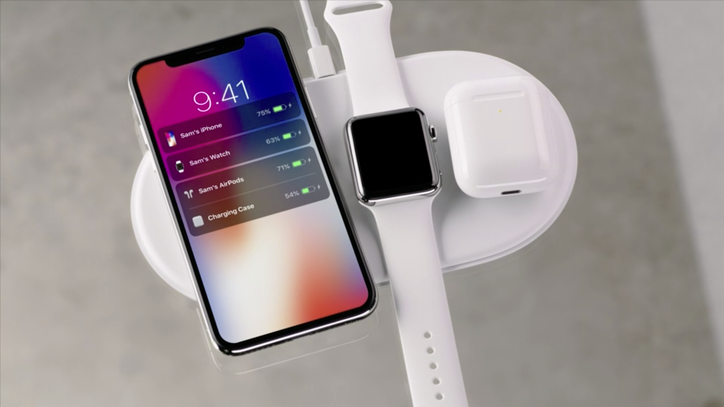
Consideration 2: Design and Performance
Quick Specs Comparison:
- iPhone X:
- Processor: A11 Bionic 6 core processor (2x Monsoon + 4x Mistral)+Tri Core Apple GPU
- Dimensions: 143.6 x 70.9 x 7.7 mm / 174 g
- No Home Button at all
- iPhone 8:
- Processor: A11 Bionic 6 core processor (2x Monsoon + 4x Mistral)+Tri Core Apple GPU
- Dimensions: 138.4 x 67.3 x 7.3 mm / 148 g
- Home Button Available (Haptic Feedback)
- iPhone 8 Plus:
- Processor: A11 Bionic 6 core processor (2x Monsoon + 4x Mistral)+Tri Core Apple GPU
- Dimensions: 158.4 x 78.1 x 7.5 mm / 202 g
- Home Button Available (Haptic Feedback)
The next big thing to consider are the specifications of the iPhone’s. Here, the iPhone 10(X) begins to diverge a little bit away from the iPhone 8 siblings. Internally, however, we have the same powerful Apple A11 Bionic processor with the M11 (Motion) co-processor integrated across all three iPhone’s (refer to chart above). They all differ in size as well as shown above. The iPhone X has a new Super AMOLED display panel which is flexible and wraps to the edges of the smartphone nearly eliminating the bezels. As a result we have the iPhone X clock in between the iPhone 8 and iPhone 8 Plus with a weight of 174g and a body dimension of 143.6 x 70.9 x 7.7 mm. The iPhone 8 Plus is a bit bigger than the iPhone X with a slightly smaller display size. The iPhone 8, being the base and the youngest sibling, has the smallest display but with the smallest and lightest build.
Since all of the iPhone’s hold an A11 Bionic Processor we know that the performance will be nearly identical (differences can be caused by the display sizes). Performance should be of little concern except perhaps that the iPhone 8 may squeeze out a higher performance score due to it’s smaller display. A smaller display requires less processing power from the cpu and gpu. All three iPhone’s will apparently feature 3 GB’s of RAM. However, due to Apple’s strict control over their app store and the iOS operating system and the homogenized nature of the iPhone we have little to worry when it comes to RAM performance and speed. Heck, even the first iPhone can be quite smooth and buttery for the most basic tasks and apps even today.
Here, we can easily see what the size and shape differences are from iPhone to iPhone and we hope this will help you make a more informed decision on your purchase. Do you want a light and small iPhone? The iPhone 8 is perfect for you. Do you want a larger iPhone that isn’t too expensive? The iPhone 8 Plus is right up your alley. Don’t care about the costs and want the latest and greatest? Re-introducing the iPhone X.
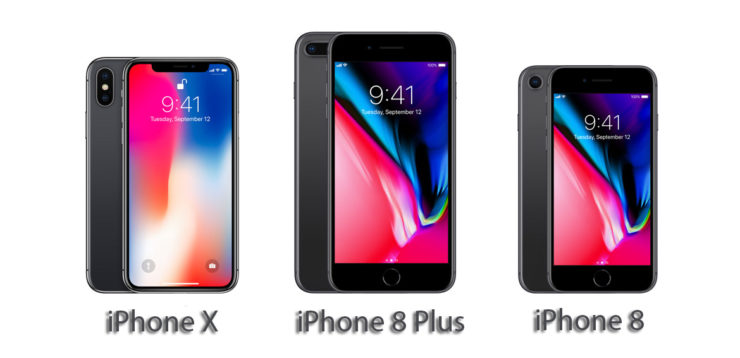
Consideration 3: Face ID vs Touch ID
- iPhone X: Face ID / No Touch ID
- iPhone 8: Touch ID / No Face ID
- iPhone 8 Plus: Touch ID / No Face ID
This is huge. So huge, in fact, that we had to create a whole new category to talk about this. So Apple’s vision of a futuristic phone’s will come without a 3.5mm headphone jack and also without a fingerprint sensor. Interesting. Instead the company has introduced a brand new feature called “Face ID”. Yes, you’ve seen and heard it over and over, it is a pretty advanced facial recognition system right on the iPhone. Of course, the iPhone 8 and the iPhone 8 Plus will NOT come with Face ID but rather they will retain the tried and true Touch ID (finger print bio metrics security). This can make it or break it for a lot of people. Face recognition systems aren’t new, it has been around for several years and it is even available on the Samsung Galaxy Note 8. However, what differs here is that Apple completely revamped it to make it really secure and really accurate. Apple does what it does best, to re-introduce and re-imagine existing tech to make it actually useful and appealing.
We all know about the big Apple mess up during their live keynote when demonstrating the Face ID function for the first time. It didn’t work. Craig Federighi (the speaker) later on tried it three times in quick succession to show that it works flawlessly. This stirred an array of concerns from people world wide but Apple did provide an explanation as to why the iPhone X’s first ever Face ID demonstration “failed”.
With that obvious gripe aside Face ID is honestly a pretty cool tech. This requires new sensors to be packed into the iPhone X’s top “lip” that sticks into the display from the top. Which includes: a flood illuminator, infrared camera, front camera and a dot projector. All of these components work together to create a supposedly seemless facial recognition system. Apple went so far as to make sure that an accurate replica of your face (via a mask) can’t fool the system let alone a printed photo. The sensors account for “Depth” of your face which essentially scans your face in 3D. Apple did also claim that the iPhone X’s face ID will “grow” with you meaning that even if you grew a beard, made cosmetic changes to your look, or put on a thick winter scarf covering your face the Face ID system will still work. On paper and in terms of marketing that is very cool but we have yet to see how this will work when the iPhone X is in the hands of the millions world-wide. Unfortunately, it seems that the iPhone X did not have any space to include a fingerprint sensor which works without you have to lift your phone up to your face.
Now, we understand that there will be some enthusiasts who will have no problems with this feature. While others, honestly, may revert to the old school pin lock because the “honeymoon” phase with this new feature got either too complicated or annoying. While still others would most likely opt for a Touch ID enabled iPhone 8 or iPhone 8 Plus.
The iPhone X may be Apple’s experimental step forward to test the waters. Shedding the 3.5mm headphone jack, the fingerprint sensor and the home button as well this is a very different iPhone altogether. A whole different beast. The specs are powerful, the technology cutting edge and re-imagined.
Consideration 4: Camera, Lights, Action

- iPhone 8
- 12 MP f/1.8 quad-LED (focal length: 28mm) PDAF, OIS, quad-LED flash
- iPhone 8 Plus
- Dual 12 MP: Wide Angle, OIS, f/1.8 + Telephoto f/2.8, quad-LED flash
- iPhone X
- Dual 12 MP: Wide Angle, OIS, f/1.8 + Telephoto f/2.4, quad-LED flash
All three iPhone’s will come shipped with the latest iOS 11 update which is filled with the newest tweaks and features. This also includes Apple’s camera feature: the revamped “Portrait mode” on the iPhone 8 Plus and the iPhone X thanks to the dual camera module. The iPhone 8 will need to sit out on this one. There is also another feature that is new which Apple calls it “Portrait Lighting”. This new function uses software algorithms to “shine light” from any direction onto your subjects face. This is like having a virtual set of studio lights around you (the photographer) to illuminate your subject. Since this is software based we can see that sometimes the results are a bit wonky depending on the lighting (real lighting at the time of shooting) and the contrast of colors between your subject, the ambient light, and the background. We found that the feature is not that great under tungsten lighting or other poorly lit rooms / places. Nonetheless it is a cool and interesting new feature presented by Apple. We can only look forward to tweaks, improvements and further overhauls of these two Portrait features.
The iPhone 8 will be the only flagship iPhone that will come with a single 12 MP sensor camera. It still has that great f/1.8 wide open aperture which lets in a lot of light and the camera lens is flanked by a quad-LED dual tone flash unit built in. The other two older brothers being the iPhone 8 Plus and the iPhone X both come with a 12 MP dual camera setup yet there are still big differences between the two. The iPhone X will have a upper hand as it comes with a Dual 12 MP camera (one with a wide f/1.8 aperture and the telephoto lens having a respective f/2.4 lens). The iPhone 8 Plus also has a 12 MP dual camera system going on (the primary also being f/1.8 but the telephoto lens being f/2.8 instead which is narrower than the iPhone X’s telephoto lens). 0.4 is not a huge number to fret over but it is a little bit more light that the iPhone X can receive which translates to slightly less noise in your photos. If the fastest telephoto lens on a smartphone is important to you the iPhone X is the go to smartphone. Otherwise, the iPhone 8 Plus (and the iPhone 8) are both more than competent iPhone’s that will still take those famously fantastic photos in most lighting.
Both the iPhone 8 Plus and the iPhone X’s dual camera will be paired with the quad LED dual tone flash units. Also, both telephoto len’s in the dual camera setup come with a 2x OPTICAL zoom feature with up to 10x digital zoom available at your disposal. Only the iPhone X will come with dual OIS (optical image stabilization) in both lenses which enables sharper photos in low light and also reduces camera shake handheld. The iPhone 8 Plus only has OIS in the wide angle lens.
The Selfie Camera is basically the same on all iPhone models with a 7 MP camera with an f/2.2 aperture lens. It will take great selfies as we all know iPhone’s are capable of.
Video Capability
All three iPhone’s have the same videography functionality available via their primary camera:
4K video: 2160p@24/30/60fps
1080p@30/60/120/240fps (Slow Mo)
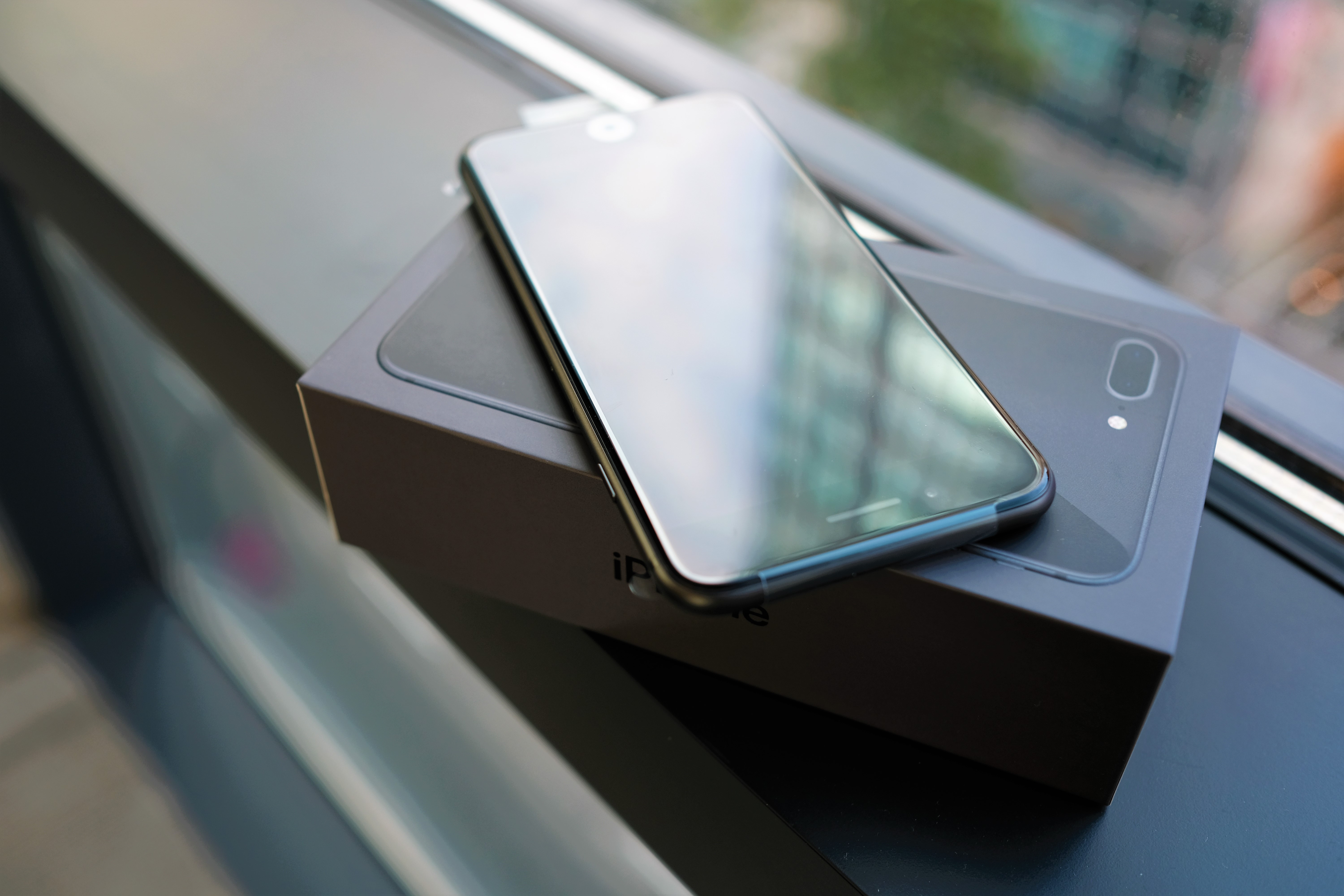
Consideration 5: The iPhone X is Late
- iPhone 8 and 8 Plus Available Now
- iPhone X: Pre-Order starts on October 27 and starts shipping on November 22
The iPhone X will be late, very late, to the party. While the iPhone 8 and the 8 Plus (which are great flagship iPhone options) are now available for your purchase and to be enjoyed almost immediately we still need to wait a month to only pre order followed by another month to actually get them shipped to us. Yes, there will be die hard fans who can wait out an eternity to get their hands on the latest and greatest from Apple while others will simply have great timing with their situation to pick up an iPhone X. The rest of us will need to be patient.
This brings up an important question: “Is the iPhone X worth waiting for?” The fears of it becoming a sort of a glorified let down in the hands of the millions of expected adopters is not an impossibility. There are chances that the Face ID feature which will stand as the phones main unlocking, payment, and other security method (other than the old pin code lock) may run into unexpected issues. If that fails and suddenly becomes unreliable or too annoying to use then what was the wait for? The iPhone 8 and the iPhone 8 Plus has the same processors, has a familiar design, Touch ID, and a fantastic camera. Purchasing the 8 or the 8 Plus will still yield you the latest tech from Apple.
Conclusion
So, despite the fact that the iPhone 8 Plus is not too much different from the iPhone X and the iPhone 8 being smaller yet is still a very capable device what would you choose? The iPhone 8 is created and marketed to the people who really need a smaller phone that still packs power and an amazing camera. The 8 is also the cheapest of the three and the price increases as we move up the tier to the 8 Plus and the iPhone X. The only advantages the iPhone X has over the the 8 models is: the display (5.8 inch edge to edge), OLED display panel, brighter telephoto, Face ID (for some), advanced Face ID sensors at the front and top, and being lighter than the iPhone 8 Plus. The rest, largely remains the same with all three boasting Apple’s latest and greatest processors, iOS 11, primary camera’s, True Tone displays (where colors are rendered more true to life), and wireless charging thanks to the glass backs. Speaking of which, all three iPhone’s also feature a stronger glass build that Apple claims should be stronger due to some sapphire mixed in. Portrait lighting and Portrait mode can be more or less a bonus for some photo enthusiast.
